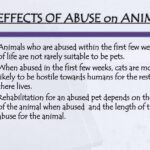Animal cruelty is an insidious issue that plagues communities across the United States, from the sprawling landscapes of Texas to the serene forests of Vermont. Every year, countless animals suffer at the hands of neglectful or abusive guardians. This brings to light a crucial question: who do you contact when confronted with a whiff of cruelty? In addressing this inquiry, it is essential to navigate the different entities dedicated to safeguarding animal welfare, enriching our understanding while providing actionable steps for concerned citizens.
To begin, it’s imperative to recognize the varied forms that animal cruelty can take. It can manifest as physical abuse, neglect, abandonment, or exploitation. With this in mind, your first point of contact should generally be your local animal control agency. These organizations are often tasked with enforcing animal laws, serving as the frontline responders to reports of abuse. In some areas, they may operate under the auspices of a governmental body, while in others, they are non-profit entities dedicated to the welfare of animals.
For instance, in Texas, local animal control units can be reached through municipal websites or hotlines. Residents can alert them to any worrisome signs, whether it’s a visibly emaciated pet or animals left in hazardous conditions. Conversely, in Vermont, residents can contact the Vermont Agency of Agriculture, Food & Markets, which has a dedicated Animal Cruelty Task Force that works diligently to address these dire situations.
Yet, the journey doesn’t end with local animal control. Beyond municipality-operated bodies, animal welfare societies play an instrumental role. Organizations such as the Humane Society not only advocate for animal rights but also provide educational resources about responsible pet ownership and the signs of animal cruelty. They often have local chapters that can assist in navigating the reporting process. If you suspect cruelty in your area, reaching out to these organizations can prove invaluable. They may have the expertise and resources to investigate your claims and take necessary action.
Another significant entity to consider is law enforcement. While not all police departments have specialized animal cruelty units, many do treat animal cruelty as a criminal offense. It is within your rights as a citizen to report your concerns to law enforcement, particularly if you have witnessed heinous acts. When making a report, ensure that you gather as much information as possible—dates, times, photos, and even witness statements can bolster your claim, enabling a more thorough investigation.
Furthermore, encountering animal cruelty can be an emotionally charged experience. It begs the question: how can one remain composed and effective while dealing with such distressing realities? Engaging in self-care is vital; advocating for animals is essential, yet personal well-being should not be sacrificed in the process. It may help to connect with others in the community who share similar concerns. Forming alliances or participating in local activism can provide emotional support and amplify your efforts. By uniting with likeminded individuals, you can cultivate a force for change that is both impactful and sustainable.
As we explore this subject, it is crucial to address the challenge of geographic disparities in animal protection laws. Various states have differing frameworks regarding animal rights, which can complicate advocacy efforts. In states like California, laws are relatively robust, offering substantial protection for animals. However, in regions where regulations may be lax, a lack of enforcement mechanisms can leave animals vulnerable. This discrepancy raises a notable conundrum: how do we ensure that all animals are protected, regardless of their geographic location? Activism at the state level, lobbying for stronger animal welfare laws, and pushing for reform within local municipalities can help bridge this chasm, but it demands collective effort and vigilance.
In addition to these avenues, there are resources such as the Animal Legal Defense Fund, which supports the prosecution of animal cruelty cases and advocates for animals in court. They offer legal assistance and can guide individuals on how to navigate the often-complex legal landscape associated with reporting animal cruelty. Their work underscores the importance of viewing animal rights through a legal lens, encouraging citizens to comprehend their responsibilities and rights in these situations.
The call to action, however, does not end with reporting. Education stands as a cornerstone of prevention. Community outreach programs can equip residents with the knowledge to identify signs of abuse and promote responsible pet ownership. Schools can host workshops or invite guest speakers from local animal welfare organizations to discuss the significance of compassion towards animals. Cultivating a culture of empathy is an effective means of mitigating future incidents of cruelty.
Moreover, social media has emerged as a formidable tool in the fight against animal cruelty. Platforms can amplify your voice, sharing information about local abuse, upcoming events, or important legislation that requires public input. Mobilizing community members through social media can elevate the conversation around animal welfare, driving awareness and inspiring action.
In summation, confronting the pervasive issue of animal cruelty is a multi-faceted endeavor. From local animal control agencies to national welfare organizations, there exists a robust network of resources dedicated to safeguarding the voiceless. However, it requires proactive engagement from every community member. By staying informed, reporting abuses, and advocating for stronger laws, the fight against animal cruelty can be amplified. Ultimately, the wellbeing of countless animals may hinge on the actions we collectively take today.








